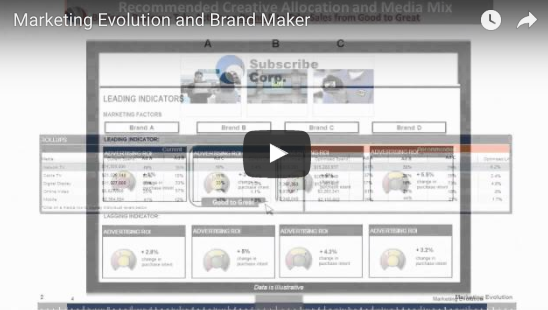The Increasingly Important Role Location is Playing in Marketing
Learn how Regions Bank Perfected their customer journey

In the digital-based modern market, most Americans see between 4,000 and 10,000 ads every single day. Consumers are tuning out ads that they don’t find relevant. According to a study from Infolinks, almost 9 out of 10 people are reported to have banner blindness when it comes to digital advertising. Additionally, viewers choose to fast forward through ads via DVR or avoid them entirely through subscription services. This presents a unique challenge for marketers who need to break through the noise and grab consumers’ attention. Research shows an effective way to do so is through media mix optimization that strategically delivers personalized, targeted, relevant content, such as location-based campaigns.
When you look at consumers’ need for targeted content across the media mix combined with their growing dependency on mobile devices, the case for leveraging geo-targeted marketing becomes clear.
Geo-targeting uses built-in GPS on mobile devices to show user location. Marketers can use geo-targeting to present ads, relevant content, promotions, coupons, and more based on where their consumers are at the moment. Users have to opt in to sharing location data, but most consumers agree to share their locations for apps like web browsers and services like Yelp, all of which can provide useful information for marketers.
The Benefits of Location-Based Marketing
This information is so useful, in fact, that marketing spend on mobile location-based marketing is expected to exceed $38 billion by 2022. Why? Because of these clear benefits:
Reach Relevant Audiences
In the past, marketers have relied on sending generic messaging across the media landscape. All they could do was hope their advertising resonated with the audience. Not only was this method a bit of a shot in the dark, but it was also a waste of valuable resources, since there was only a slight chance messaging would reach relevant consumers.
Now, advanced data and analytics processes, including geo-targeting, allow marketers to deploy hyper-targeted, personalized messaging that addresses the four Ps of marketing. Geolocation data allows marketers to:
- Send consumers advertisements or promotions when they are within a certain distance of the business
- Reach out to consumers when they are within a certain distance of competitors’ businesses
These techniques help marketers serve person-level content to consumers who are in strategic physical locations and are therefore more likely to make the purchase decision. In fact, these person-level insights enable detailed optimizations that can quickly increase ad effectiveness by 20% or more.
Improve the User Experience
Beyond content personalization, which enhances the user experience on its own, marketers can also leverage location-based marketing to customize online experiences for consumers as they travel and go about day-to-day activities. For example, you can set websites to display certain information based on where consumers are located, such as your nearest retail location. This strategy streamlines users’ experiences with your marketing content— no searching around for the location, coupon, or other information they’re looking for. Instead, it’s presented right to them.
Understand Consumers Better
Beyond optimizing marketing campaigns in the here and now, geo-targeting data can also help improve marketing efforts in the future. Take location data like foot traffic patterns—marketers can use this information about where, how, and when target consumers are shopping to create new, more effectively targeted campaigns going forward.
The Consequences of Not Leveraging Location-Based Marketing
For those that are not yet making use of location-based marketing within their mix or only leveraging minimal location considerations, there can be significant consequences.
First, brands can run into cultural issues. Geo-targeted content should not only use the local language but should be tailored to cultural norms in the region. Consider this example: Pampers rolled out a campaign in the US and Canada using stork imagery, since in North America storks are widely recognized as a symbol for the arrival of a baby. However, when Pampers used this same imagery in a Japanese campaign, it did not resonate, since in Japanese culture it’s a giant peach that delivers new babies, not storks. Had the Pampers marketers used geo-level data insights, they could have avoided wasting spend on a campaign that was not location-relevant.
Furthermore, platforms may differ by location. A robust understanding of consumers can identify their preferred communication platforms, such as Google in the United States, Baidu in China, and VKontakte in Russia. Insight into preferred platforms by location can ensure campaigns are optimized and targeted properly.
3 Examples of Successful Location-Based Campaigns
Let’s take a look at three examples of well-executed geo-targeted campaigns:
Whole Foods: Targeting Competitors
With the goal of increasing conversion rates on their mobile ads, Whole Foods launched a campaign where they placed geo-fences around nearby supermarket competitors, sending ads for special deals. This technique, combined with sending ads to a geo-fenced region around their own stores, resulted in a 4.69% post-click conversion rate, more than three times the industry average.
Toyota: City-Specific Banner Ads
Toyota decided to purchase geo-targeted ads on Snapchat in an effort to revitalize its aging “Let’s Go Places” campaign. The Snapchat ads were shown in the Live Story feature in the Los Angeles area. Toyota also created customized ad banners for its Google campaigns in 15,000 US cities. The ads were geared at encouraging consumers to explore their own cities by driving Toyota cars, resulting in an 11.2% sales boost.
Urban Outfitters: Understanding Consumer Behaviors
Urban Outfitters used location data to optimize their in-app marketing based on shoppers’ activities. For example, shoppers who had recently visited bars or nightclubs were targeted with promotions on party dresses. This technique delivered a 75% increase in conversions and a 146% boost in revenue.
Final Thoughts
To run successful location-based marketing campaigns, you need the right data and processes to make use of it optimally. This includes data from both online and offline touchpoints, broken down into person-level insights—attribution data that provides information on conversion points and channels, aggregate data that illuminate trends and other external factors that influence buyer decisions, and messaging and brand impact data that measure brand authority.
It’s also crucial that marketers track location-based campaign performance so they can attribute ROI to the correct channels, media mix models, and messaging and optimize them both as they are running, as well as in the future.






















